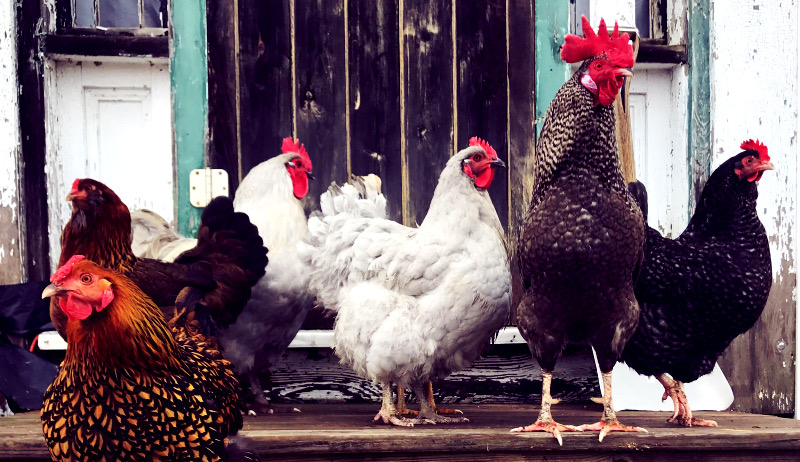
Summer is a blur of activity on a farm, and this time of year, that activity is focused on the coming months, which won’t be as hospitable and warm. Most farmyard poultry is surprisingly resilient in the cold as long as adequate shelter is provided. Chickens, geese and ducks can survive subzero temperatures, they just need to have safety from wind and wetness. Dry cold, while not enjoyable, isn’t as dangerous as damp cold, which can get into bird’s respiratory systems or cause frostbite. Here’s what we do in terms of winter preparation.
Shelter
All our birds have stalls within the barn they enter at night, even in summer. It makes me feel comfortable that they’re more secure from predators, whose threat increases in the lean months of winter. Shelters should be easy to close up at night, and while ventilation is important, no opening should be low or large enough for a fox or other predator to crawl through.
Chickens don’t bother going outside much in winter. I open their door every day and clear an area for them to stretch their legs, but unless it is a warm and sunny day they stay in their coop. For winter preparation, it is important that the coop is large enough for the number of hens you keep (four square feet per bird is a general rule) and that you clean it regularly when they are spending so much time inside. You can use the “deep litter” method to keep your coop clean in winter, which involves putting fresh bedding over the manure instead of doing a full cleaning. In winter, when the chicken’s manure freezes and does not smell, and added bedding will help keep them warm, the deep litter method is often the easiest way to clean your coop.
Geese and ducks are another matter and require slightly different winter preparation. They will trundle outside in the fiercest weather. If it is particularly cold or stormy, we might keep the waterfowl inside for their own good, otherwise they will sit in the yard with their heads under their wings. Just like the chickens in the coop, a dry stall with plenty of bedding will keep geese and ducks warm when they are inside.
Water
Water is the biggest winter challenge for winter preparation. Chickens need fresh drinking water, while ducks and geese need deep, fresh water and like to have troughs so they can bathe. We set up a couple of heated dog water bowls to make sure everyone has drinking water at all times, and I use larger rubber feed troughs out in the field for the waterbirds to bathe in. Rubber will withstand holding frozen water, and it’s easy to get the ice out of the troughs.
Food
It is also important to remember that the birds won’t have access to all the fresh greens and grubs they forage during summer. Our grain consumption will go up, and I provide plenty of protein-filled mealworms for the hens while giving the geese fresh lettuce and other greens from the grocery store.
Light & Heat
I do not give my birds supplemental lighting or heat, although many farmers do. Additional lighting and heat are said to help egg production in the winter, but they also bring a risk of fire. Regarding this facet of winter preparation, I am not worried about keeping up the egg numbers and am happy to let the hens have a little break during the off season.
Special Care
Some chickens and geese need special winter care. A goose, such as the Sebastopol with its loose, curly feathers, isn’t able to snuggle into its down in the cold the way a straight-feathered bird can. For such birds it is especially important to make sure their pasture space has a wind break and that they are warm and dry at night. Chickens with larger combs, especially roosters, can suffer frostbite. Frostbite can be treated with ointments, and keeping your birds inside and well bedded will help prevent it.
So, for the next few weeks we’ll engage in winter preparation, tweaking our stalls to make sure there isn’t too much airflow or gaps for wind to come through, and checking that all our heated waterers are still working. It is time to stock up on bedding and feed, and start dusting off the snow shovels: Winter will be here before we know it.




